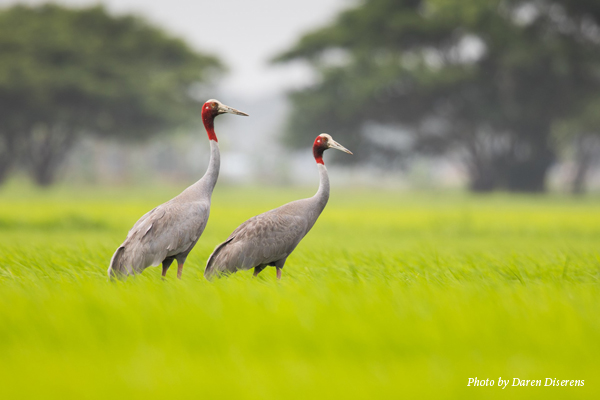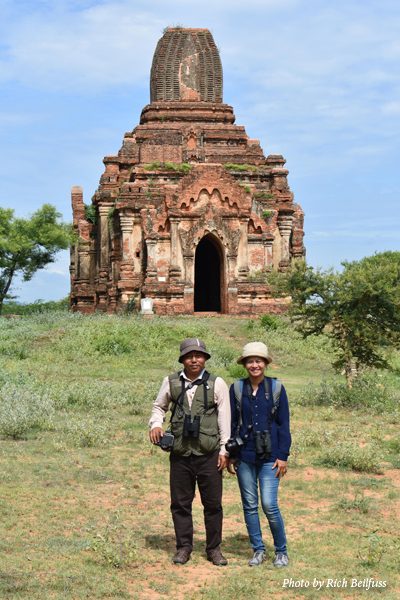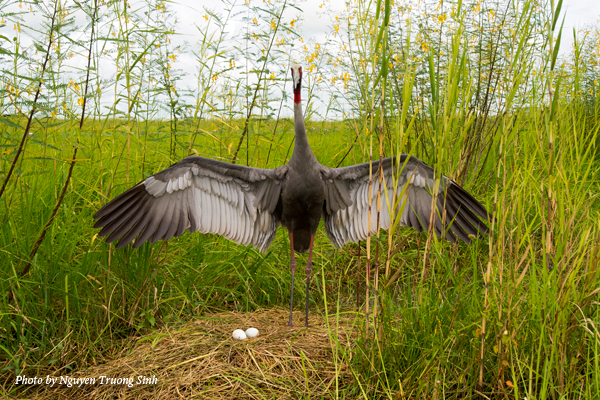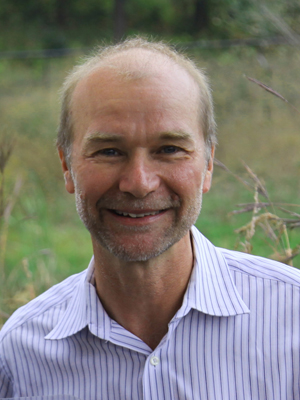
I last visited Myanmar (then Burma) in 1986. Since that time, Myanmar has broken out of military isolation and is developing rapidly. The bicycle-filled streets and small shops of Rangoon have given way to a major urban metropolis, now called Yangon. I returned to Myanmar this summer with our Southeast Asia Program Coordinator Dr. Tran Triet. Over the last few years, we have been developing a new Sarus Crane program with our Myanmar colleagues, including experienced birders and conservationists Myo Sandar Winn and Ko Lay Winn, who joined us for the entire trip.

Myanmar has more than 1,000 bird species, including eight endemic species and 46 of conservation concern. A small population of about 400 Sarus Cranes occurs in Myanmar, mostly in the Ayeyarwady River Delta. These Sarus Cranes are isolated from the neighboring populations in India and the Southeast Asian countries of Thailand, Vietnam and Cambodia. The Sarus Cranes of Myanmar have an interesting blend of ecological characteristics of the India Sarus Cranes that occupy the agricultural landscape of northern India and the Eastern Sarus Cranes that occupy the large floodplain wetlands of the Mekong Delta.

The Sarus Cranes in Myanmar nest and feed on large naturally-flooded rice fields and wetlands interspersed with Eleocharis sedges that produce the tubers they love. Our goal is to preserve this mosaic of flooded rice crops and wetlands by demonstrating that they have a higher economic value, and provide more benefits to the local communities, than the intensified, triple-cropped, heavy pesticide/fertilized rice production systems that converted much of the Mekong Delta into a global rice bowl—but at great cost in terms of wetlands and species loss. We significantly advanced this goal on this trip by bringing two major agricultural development forces into the field with us – the Livelihoods and Food Security Trust Fund (LIFT) and AWBA Corporation – which are collectively investing many millions of dollars in Myanmar for agriculture and rural development.
The team loved the Sarus Cranes and our vision, and we are taking steps now to develop a pilot program together. The program will create a market for naturally-flooded eco-rice in Yangon and beyond, a great community-based ecotourism opportunity in this beautiful and diverse landscape, and other activities.
Like so many other areas where the International Crane Foundation works, the promise of development in Myanmar is threatening the remaining Sarus Crane habitats. However, by using the lessons we’ve learned from our work in Vietnam, China, and other rapidly developing regions, we hope to preserve – and grow – this last crane stronghold in Myanmar.
 Story submitted by Rich Beilfuss, International Crane Foundation President & CEO. Click here to learn more about our work in South-Southeast Asia.
Story submitted by Rich Beilfuss, International Crane Foundation President & CEO. Click here to learn more about our work in South-Southeast Asia.
